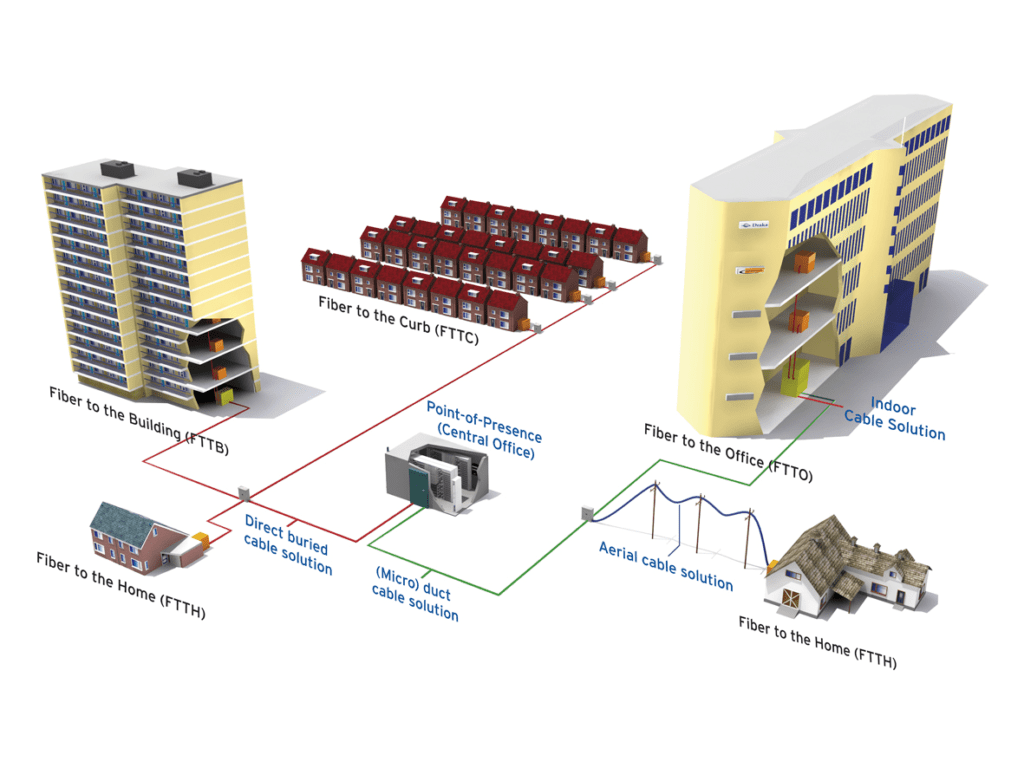In today's interconnected world, the question of why we need fiber cables isn't just a technical inquiry—it's a reflection on how we wish to connect with the world and the kind of future we want to build. Let's explore the answers to this question through four essential perspectives.

1. How Do Fiber Cables Act as Bridges of Speed?
Imagine a world where communication was once slow, where letters took days, weeks, or even months to reach their destination. The phrase “Once upon a time, letters traveled slowly, and horses took days” captures the essence of a past where time and distance were significant barriers. Fast forward to today, where planes, high-speed trains, and instantaneous communication via email and video calls have shrunk these barriers to mere seconds.
Even though we live in a modern age with high standards of living, many areas around the world still suffer from poor signal strength and limited communication capabilities. We are not just connecting with ourselves; we are striving to help more regions keep pace with our speed. The true power of fiber cables lies in their ability to connect us with the world. Can there be a greater purpose than bridging the gaps between us and the rest of the world?
Fiber cables create pathways that connect us at the speed of thought. They make it possible for a person in one part of the world to communicate instantly with someone on the opposite side. This ability to connect is not just about personal convenience—it's about global inclusion. Fiber cables empower communities, bring education and healthcare to remote areas, and
create opportunities where they didn’t exist before.

2. Why Are Fiber Cables More Cost-Effective from a Manufacturing Perspective?
At first glance, copper cables might appear to be the most cost-effective choice, as they are cheaper to produce than fiber optic cables. However, when we consider the hidden costs, the picture changes. Have you ever thought about the long-term expenses associated with copper cables—maintenance, interference, the risk of tampering, and the frequent need for replacement?
Fiber optic cables, while initially more expensive, prove to be a better financial option in the long run. Their durability, resistance to interference, and lower maintenance costs make them a more sustainable choice. Moreover, they are environmentally friendly, conserving resources and reducing waste.
Isn't it worth investing in technology that not only saves money over time but also contributes to a healthier planet? Fiber optics align with our growing awareness of environmental responsibility, making them the smarter choice for the future.
3. How Do Fiber Cables Enhance Sales and Business Opportunities?
In a world where network equipment requires more bandwidth, higher speeds, and more reliable internet connections, fiber optic cables are the obvious choice for those providing telecommunications and internet services. But have you ever considered how this choice transcends mere commercial value?
Think about the growing need for advanced technologies like security cameras, digital signage, and VoIP phone systems. These require robust, high-speed connections that only fiber cables can provide. By choosing fiber, businesses not only gain a competitive edge but also contribute to the broader progress of human technology.
Isn’t it remarkable that a simple decision to use fiber can lead to significant advancements in our technological capabilities?
By enabling faster and more reliable connections, fiber cables help businesses flourish and drive innovation forward. They play a critical role in supporting the technological infrastructure that powers modern life.
4. How Do Fiber Cables Usher Us into the Era of Data Centers and New Technology?
As we move deeper into the digital age, data centers are becoming the nerve centers of our world. These facilities store and manage the vast amounts of data that drive everything from social media to cloud computing. Have you ever wondered how fiber cables fit into this picture?
Fiber optics are the key to making data centers more efficient and powerful. They allow for faster data transmission, higher bandwidth, and greater reliability, which are essential for the smooth operation of modern technology. But it’s not just about the speed—it’s about the ability to integrate seamlessly with emerging technologies.
Fiber cables are not just a tool; they are a gateway to the future. They enable us to explore new possibilities, from artificial intelligence to the Internet of Things. By connecting us to the latest technological advancements, fiber cables help us embrace the future with open arms.
In conclusion, fiber optic cables are much more than just a medium for transmitting data. They are the bridges that connect us to each other and to the world at large. They offer a cost-effective and environmentally friendly solution, enhance business opportunities, and open the door to new technologies. The question isn’t just "Why do we need fiber cables?" but rather, "How can we afford not to embrace this essential technology?"
By asking the right questions, we can see that fiber optics are not just a luxury—they are a necessity for a connected, efficient, and innovative future.
Why do we need fiber cables?

Building a better life, with AIMIT by your side







